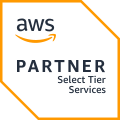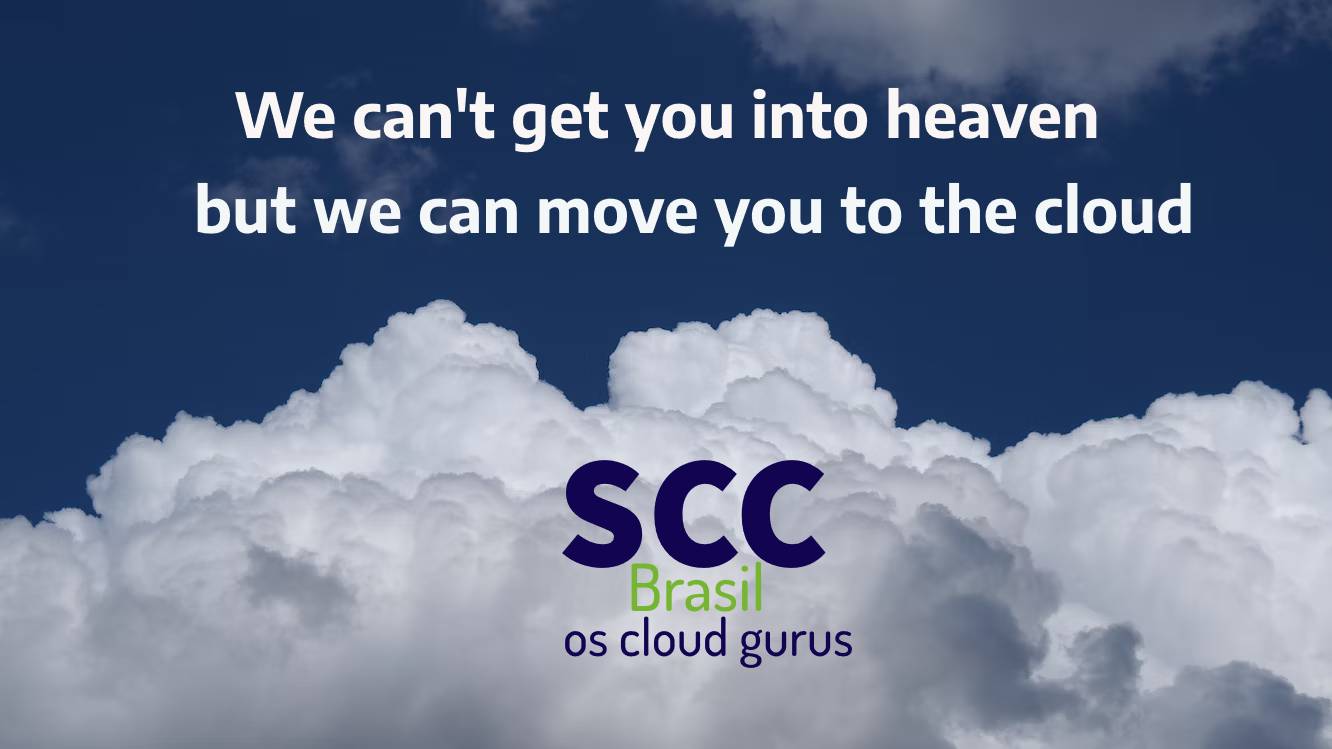SCC
Brasil
os cloud gurus

Software Cloud Consulting
Your software development, cloud, consulting & shoring company
![]() German efficiency and quality from Brasil
German efficiency and quality from Brasil
![]()

SCC
Brasil
os cloud gurus

Software Cloud Consulting
Your software development, cloud, consulting & shoring company
![]() German efficiency and quality from Brasil
German efficiency and quality from Brasil
![]()

Cloud computing means, you lease your databases, storage, applications or other computing services through a cloud provider. You pay according to use, i.e. only for servers that are really running
With more than 200 services, Amazon Web Services has been the world's most comprehensive and most most commonly used cloud platform for many years.
You can change and renew your business model much faster and more
flexible in the cloud.
You can increase or reduce resources
dynamically , also avoid hardware investment costs, instead pay only
what they actually use.
If you just copy your existing on-premise system landscape 1:1 to
the cloud, you will probably not achieve cost savings.
On-premise
systems are often oversized vertically and only used effectively 20%
. However, if you use the cloud correctly for your purposes, scale
correctly, use modern serverless architectures, you can definitely
save costs, especially in the Administration.
If you already have a well-trained IT staff for the cloud or AWS,
you can of course migrate by yourself to the cloud.
If you and your
employees have just registered your first AWS account have and you
are about to take the first steps, we advise you to get professional
help.
At least for a while until the main services have migrated and
your were able to learn best practices from your partner.
Make an analysis of your existing server landscape. Which servers do
you want to migrate into the cloud ? Desktop systems can be ignored
, you will not migrate them.
If you run mostly Windows Server , a
migration to Azure makes perfect sense. However, if you mainly run
Linux servers, please keep them, save money and migrate to AWS.
The prices for virtual machines and compute services are relatively
similar for both providers. If you operate an identical system
landscape on AWS or Azure, the cost differences will be limited.
However, Azure customers use more frequently Windows Server instead
of Linux, Microsoft Databases instead of MySQL or Postgres and
generate on this way higher hardware and especially software license
costs
SCC Brasil also does architecture reviews to check existing AWS
system landscapes. We create in the process a report with all
findings including improvement possibilities and measures.
Main
focus are Cost Savings, Security, Resilience & Use of Best
Practices.
You can make huge cost savings on AWS with some smart choices. In
general: use the correct instance type and size. Scale horizontally,
not vertically. Stop instances that are not needed 24/7 , e.g.
outside normal business hours. Save with Saving Plans and Spot or
Reserved Instances. Use serverless and avoid transfer costs with VPC
endpoints. We gladly advise you on this!
Please have a look in our blog about cost saving possibilities on AWS
How to save money on AWS
That depends on what exactly you want to migrate to the cloud.
storage, backup, applications, databases etc. There are various
strategies for migrating your business solutions, also known as the
7 R's : refactor, replatform, repurchase, rehost, relocate, retain,
and retire. You must choose the best strategy for your use case. You
find more informations on this in our blog
Properly configured, AWS and the cloud in general offers excellent
security and even even more options to protect your data and
workloads as On Premise.
However, there is a lot of know-how in this
topic and you must follow best practices. Ultimately, the
responsibility lies with you, to use the appropriate security
measures properly. Please take a look in our blog to read more about
this important topic:
Security Best practices on AWS
This also depends on your business model, but we recommend using
multiple accounts and therefore the strict separation and thus
isolation of different stages, environments or customer solutions.
You can find more information on this in our blog..
Of course SCC Brasil.
We accompany you step by step on your journey
to the cloud, consult you, train your team during the migration and
carefully document all steps for you, so that after the migration
you are ready to maintain or expand your infrastructure in the cloud
on our own
Yes, like for example SCC Brasil. Consulting costs in europe or USA are expensive, you will
spend a significant amount of money for your cloud migration.
Since we have significantly lower rates for our consultants and engineers, you can economize your cost by
contracting a shoring consulting company like SCC Brasil.
Costs for AWS services differ from region to region. If your complience does not obrigate you to run your
services or
store your data in your region, it is worth to compare the prices on your used servics from region to
region.
You might save money if you use the US region instead of Brazil or Ireland instead of Germany.
Of course consider the latency if you go this way.
Also you can economize money on the consulting costs by working with a shoring consulting company like SCC
Brasil as
just mentioned.
You might either talk to AWS or Azure directly, use their Partner Search or search
the best company by yourself, either in your region if this is a factor for your or
consider a shoring consulting company like SCC Brasil.
If you might need not the classical services but for example IOT or ML, search for a company
with experience and use cases in this area.
Depends a lot on your location, but you can plan with more than 100$ for a cloud consultant.
Consulting companies charge even more than Freelancers, you might end up paying 200$ / hour.
That's why SCC Brasil is a perfect alternative for you, as your shoring partner we can offer you
significant lower rates as the companies in the USA.
Get in contact and we will pass more informations about our services and rates.
Search for a consulting company with experience in this area, most companies will offer this service.
SCC Brasil will help you for developing your strategy and also in the implementation.
There are consulting companies which are focused only on one cloud for example AWS or Azure, but also
companies.
which will implement and plan multi-cloud solutions.
SCC Brasil can support you on AWS and Azure, Google we currently don't offer.
Many cloud consutling companies are offering this, a few are specialized only on cost optimization.
SCC Brasil offers Reviews for Cost Optimization, Security and Architecture .
We would be happy to support you saving cost in your AWS or Azure cloud.
Please have a look in our blog about cost saving possibilities on AWS
How to save money on AWS
Many cloud consutling companies are offering this, a few are specialized only on cost optimization.
SCC Brasil offers Reviews for Cost Optimization, Security and Architecture .
We would be happy to support you saving cost in your AWS or Azure cloud.
There are companies which only offer curses, certificates, online-training.
Many consulting companies offer trainings besides their consulting and implementation services.
SCC Brasil can train your team with Workshops, trainings and during the implementation.
You pay for compute resources like EC2 instances, Managed Services, Serverless ( indeed a compute resource),
for
storage like EBS, EFS or S3 and Data transfer.
Also some Services like WAF or others are based per
hour.
Please have a look in the AWS Pricing calculator to get an estimation about the costs you might cause with
your services.
First of all you have to follow the best practices for IAM ( Identity and Access Management ).
Don't use the root user for daily business, always use MFA, use roles instead of users or access keys,
use the principle of least privilege and more.
Secure your Network & Compute resources with Security Groups, use the private subnets if possible and more.
Do regular analyses in Trusted Advisor and Security Hub.
Have a look in our blog for more informations
Security Best practices on AWS
